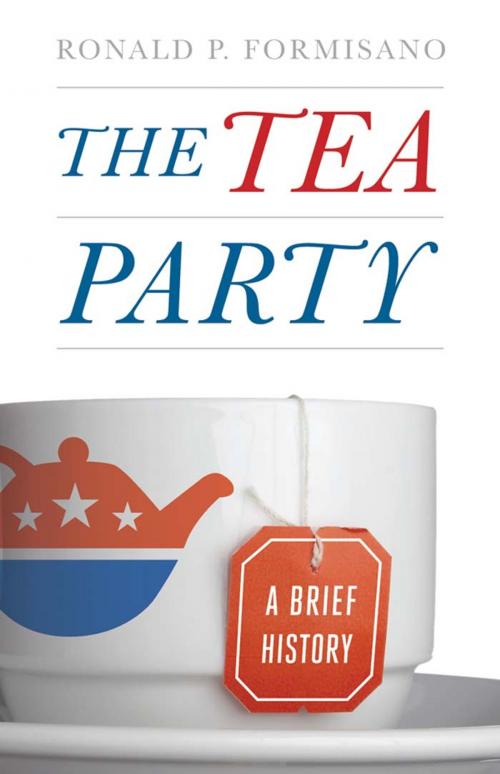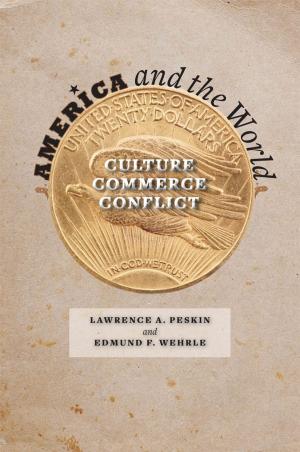The Tea Party
A Brief History
Nonfiction, History, Americas, United States, Social & Cultural Studies, Political Science| Author: | Ronald P. Formisano | ISBN: | 9781421406107 |
| Publisher: | Johns Hopkins University Press | Publication: | May 15, 2012 |
| Imprint: | Language: | English |
| Author: | Ronald P. Formisano |
| ISBN: | 9781421406107 |
| Publisher: | Johns Hopkins University Press |
| Publication: | May 15, 2012 |
| Imprint: | |
| Language: | English |
The Tea Party burst on the national political scene in 2009–2010, powered by right-wing grassroots passion and Astroturf big money. Its effect on electoral politics and the political process is undeniable, but the message, aims, and staying power of the loosely organized groups seem less clear. In this concise book, American political historian Ronald P. Formisano probes the remarkable rise of the Tea Party movement during a time of economic crisis and cultural change and examines its powerful impact on American politics.
A confederation of intersecting and overlapping organizations, with a strong connection to the Christian fundamentalist Right, the phenomenon could easily be called the Tea Parties. The American media’s fascination with the Tea Party—and the tendency of political leaders who have embraced the movement to say and do outlandish things—not only has fueled the fire driving the movement, but has diverted attention from its roots, agenda, and the enormous influence it holds over the Republican Party and the American political agenda. Looking at the Tea Party's claims to historical precedent and patriotic values, Formisano locates its anti-state and libertarian impulses deep in American political culture as well as in voter frustrations that have boiled over in recent decades. He sorts through the disparate goals the movement’s different factions espouse and shows that, ultimately, the contradictions of Tea Party libertarianism reflect those ingrained in the broad mass of the electorate.
Throughout American history, third parties, pressure groups, and social movements have emerged to demand reforms or radical change, only to eventually fade away, even if parts of their programs often are later adopted. The Tea Party’s impact as a pressure group has been more immediate. Whether the Tea Party endures remains to be seen. Formisano’s brief history certainly gives us clues.
The Tea Party burst on the national political scene in 2009–2010, powered by right-wing grassroots passion and Astroturf big money. Its effect on electoral politics and the political process is undeniable, but the message, aims, and staying power of the loosely organized groups seem less clear. In this concise book, American political historian Ronald P. Formisano probes the remarkable rise of the Tea Party movement during a time of economic crisis and cultural change and examines its powerful impact on American politics.
A confederation of intersecting and overlapping organizations, with a strong connection to the Christian fundamentalist Right, the phenomenon could easily be called the Tea Parties. The American media’s fascination with the Tea Party—and the tendency of political leaders who have embraced the movement to say and do outlandish things—not only has fueled the fire driving the movement, but has diverted attention from its roots, agenda, and the enormous influence it holds over the Republican Party and the American political agenda. Looking at the Tea Party's claims to historical precedent and patriotic values, Formisano locates its anti-state and libertarian impulses deep in American political culture as well as in voter frustrations that have boiled over in recent decades. He sorts through the disparate goals the movement’s different factions espouse and shows that, ultimately, the contradictions of Tea Party libertarianism reflect those ingrained in the broad mass of the electorate.
Throughout American history, third parties, pressure groups, and social movements have emerged to demand reforms or radical change, only to eventually fade away, even if parts of their programs often are later adopted. The Tea Party’s impact as a pressure group has been more immediate. Whether the Tea Party endures remains to be seen. Formisano’s brief history certainly gives us clues.















